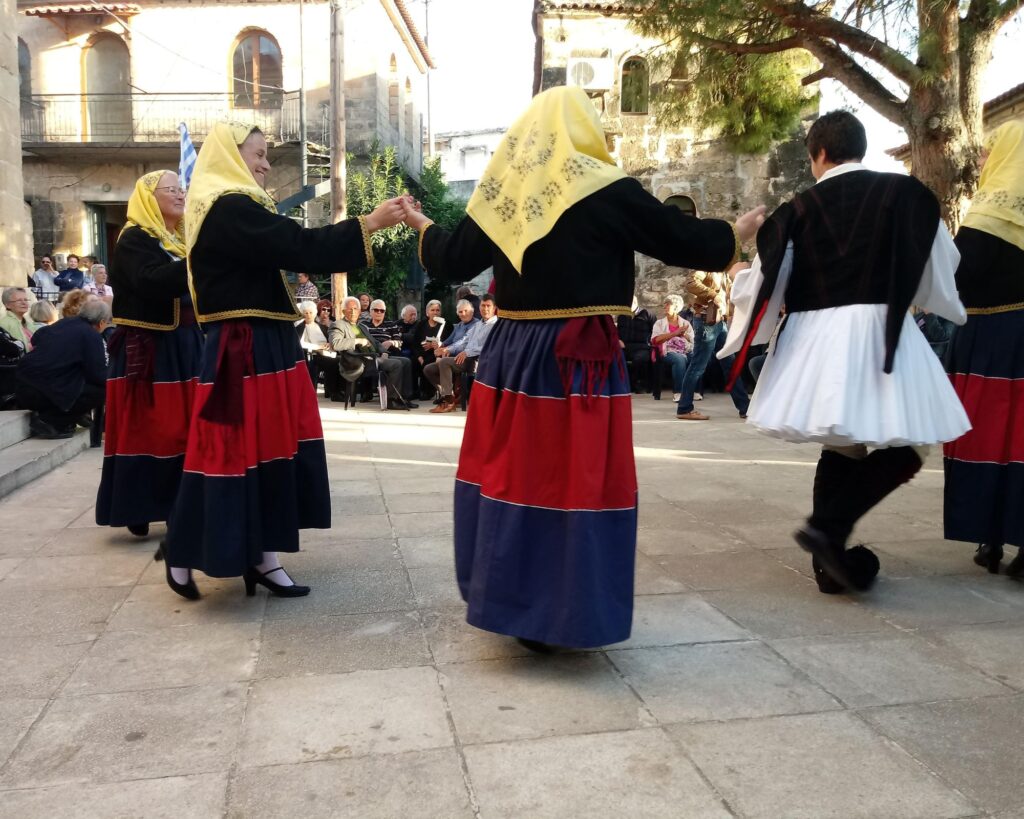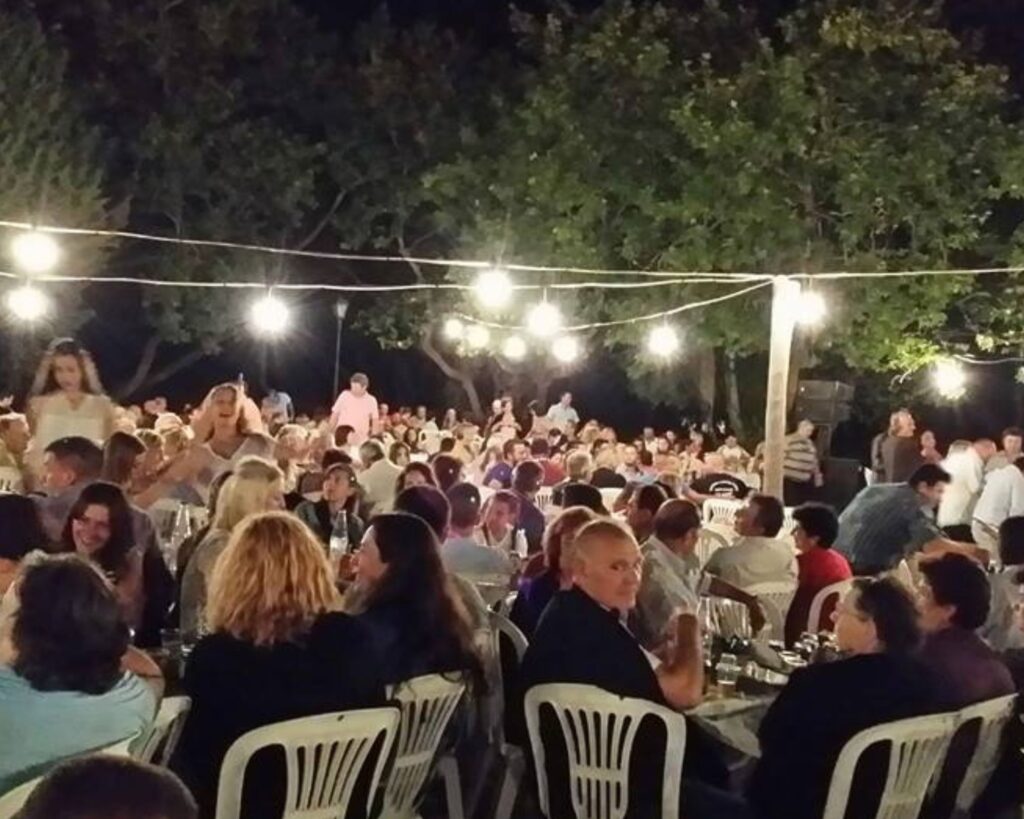The Mani Peninsula’s rugged landscapes and rich history are a treasure trove of cultural experiences. Among these, the traditional festivals, known as “panigiria,” stand out as vibrant celebrations of local heritage, offering visitors a unique glimpse into the soul of Mani.

Traditional Festivals of Mani – What is a Panigiri?
A panigiri is a traditional Greek festival combining religious observance and cultural festivities. These events are typically held in honor of a patron saint or religious holiday. They are deeply rooted in Greek Orthodox traditions. However, they are also a community celebration where locals and visitors enjoy music, dancing, food, and camaraderie.
When and Where to Find Panigiria in Mani
Panigiria can be found throughout the Mani Peninsula, particularly during summer. Almost every village hosts its festival, often centred around the local church or village square. While specific dates and locations may vary each year, here are some general tips on what to expect:
- Saints’ Feast Days: Many panigiria are held on the feast days of saints, such as Saint Peter and Paul (June 29th), Prophet Elias (July 20th), and the Dormition of the Virgin Mary (August 15th). These events often begin with a religious service followed by lively celebrations.
- Village Festivals: Villages like Milea, Rigklia, and Exoxhori are known for their vibrant panigiria. Each festival has its own unique charm, reflecting the traditions and history of the village.

What to Expect at a Panigiri
1. Music and Dancing: Traditional Greek music, played on instruments like the bouzouki and lyra, sets the tone for the festivities. Locals and visitors alike join in the dancing, often forming large circles and performing traditional dances like the kalamatas and syrups.
2. Traditional Food and Drinks: A panigiri is a feast for the senses, especially the taste buds. Expect tables laden with local delicacies such as souvlaki, local pork, olives, cheese, and freshly baked bread. Wine,and Ouzo flow freely, enhancing the celebratory atmosphere.
3. Community Spirit: The heart of any panigiri is its community spirit. These festivals are not just about entertainment; they are a time for people to connect, share stories, and create lasting memories. Visitors are often welcomed warmly and invited to join in the celebrations.
4. Cultural Displays: Besides music and food, panigiria often feature cultural displays such as traditional costumes, crafts, and sometimes even reenactments of historical events.

Traditional Festivals of Mani – Why You Should Experience Them
Attending a panigiri in Mani is more than just a fun activity; it’s an immersive cultural experience. These festivals offer a rare opportunity to see the traditions of the Maniots firsthand, to understand their history, and to appreciate the sense of community that binds them together.
Whether you’re dancing under the stars, savouring a homemade meal, or simply soaking in the lively atmosphere, a panegyric is an unforgettable way to experience the heart and soul of the Mani Peninsula.

Conclusion
The traditional festivals of Mani are a testament to the region’s rich cultural heritage and vibrant community spirit. By attending a panigiri, you not only get to enjoy the festivities but also become a part of a longstanding tradition that celebrates life, faith, and togetherness. So next time you’re in Mani, check out the local festival calendar and immerse yourself in the joyous celebrations that define this remarkable region.
Search
Categories
- Accommodation
- Activities
- Architecture
- Areopoli
- Awards
- Beaches
- Community
- Culture
- Destination Highlights
- Discover
- Entertainment
- Food
- Gerolimenas
- Greek Cuisine
- Guide
- Gythio
- History
- Hotels
- Kardamili
- Kardamyli
- Kotronas
- Living in Mani Greece
- Local Business
- Mani
- Marine Life
- Marmari
- Nature
- News
- Off-the-Beaten-Path
- Stoupa
- Sustainability
- Tradition
- Travelling
- Villas
- Wildlife
